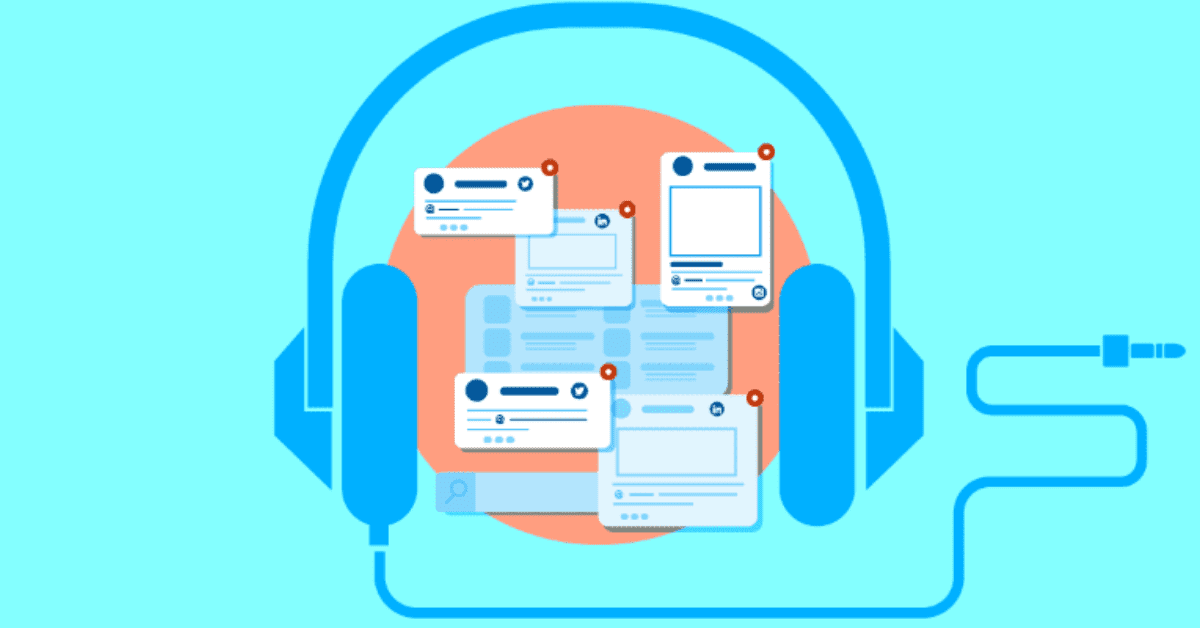Radarr offers free Social Listening 101 courses through Radarr Academy
What is social listening?
Sounds like something scary? Like your every move is under surveillance and is being listened to? No, no, not at all. This article aims to clear up such misunderstandings and tell you more about social listening, and why it’s important for all businesses – big and small.
Social listening is a form of digital intelligence that tracks publicly available information and conversations in an effort to understand what your consumers’ preferences are. This can be found in various forms (not limited to) such as public online forums, influencer blogs, Facebook comments, news articles, etc.
Now why is that important?
In 2019, a study reported that there are 3.96 billion people on social media, with each user being active on an average of 9 social platforms. With the current accessibility to the internet and a growing youth population, you can expect an even greater increase (19%) for unique netizen growth. Essentially, you are looking at the world’s largest data group for businesses to tap into for insights and information.
Here is a generic overview of why social listening is important for your business. (We’ll cover some topics in more detail in our upcoming blog posts – stay tuned for more!)
1. Consumer & Audience Insights
Surveys, focus groups, and feedback forms are great ways to obtain consumer feedback… But what about what they’re saying behind your back? From Twitter to online forums, social media is where most of your consumers’ conversations are taking place. Through social listening, your brand can easily keep track of all these conversations in one dashboard, and uncover what they love, hate, and can’t stop talking about.
The Word Cloud in Radarr is a great way to find out what people are discussing around a topic of interest:
2. Campaign Tracking
There’s no way to prove success unless you can measure it – which is why it is so important to be on top of your campaign performance. CPCs and CTRs may be useful when you are considering digital metrics, but what about the nuanced details that will help ensure the success of your next campaign? Social listening can help answer some of the most important questions about your campaign’s performance, such as:
- How many people were talking about the campaign?
- What did people say about the campaign?
- Did the campaign generate more positive, negative, or neutral sentiments?
- Which channels were most of the mentions coming from?
3. Competitive Tracking
With competitive analysis and research, one of the most important figures is Share of Voice, to uncover which brand is driving the most conversations. This is the closest way to track market share which makes it critical in assessing your efforts.
One of the many features Radarr offers is the ability to compare the estimated reach, number of mentions, and volume of engagement across different brands. In the chart below, we can see that Chanel has surpassed Dior and Estee Lauder, having a much wider reach and generating the most organic mentions.
4. Industry & Market Trendspotting
Sharing content solely around your brand or products is not enough to keep audiences engaged. Brands are now leveraging on trending content such as the 10 Year Challenge to boost engagement and maintain relevancy with audiences. While most brands play catch up and jump on a trend as it’s peaking, wouldn’t it be more efficient to identify emerging trends before they go viral – keeping your brand ahead of the curve?
While you can pay someone to continually look through social sites and update you with the latest trends and memes, having a social listening tool that updates you on trends that matter will make the content creation process much easier.
For more tips on what trends are worth riding on, check out the trendspotting checklist we curated! Hit 6 out of 10 and you’re good to go.
5. Influencer Opportunities
When it comes to purchasing a product or switching brands, people no longer rely on just advertisements or product reviews. Influencers have become one of the top sources that consumers go to before making a purchasing decision.
If your brand is already engaged with influencers, social listening can help you keep track of the content being shared, and to assess the effectiveness and ROI of each post. Alternatively, if you’re looking for influencers to collaborate with, social listening can identify influential people in your industry who may or may not be talking about your brand or products.
6. Crisis Management & Prevention
From negative reviews to social media blunders, crisis situations like these can make or break a company. Ensuring you have social listening setup is essential to stay on top of negative sentiments about your brand, campaign, or products. After mitigating the issue at hand, you are even able to track the changes of the conversations to ensure everything is handled.
Ultimately, social listening and intelligence can be used in a breadth of situations in order to track and analyze your company’s key objectives. It’s functionality and deep pockets of data can prove invaluable to any company. If you want to find out more, reach out to us at insights@www.radarr.com












